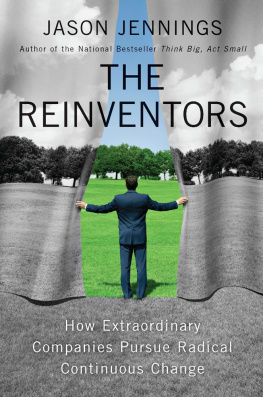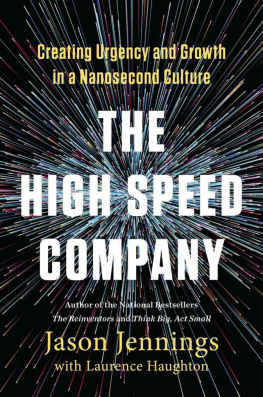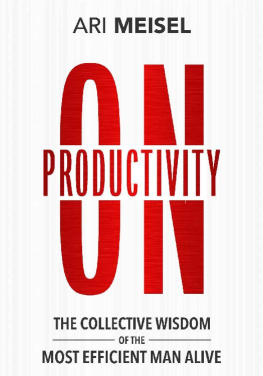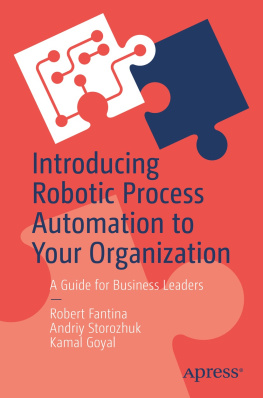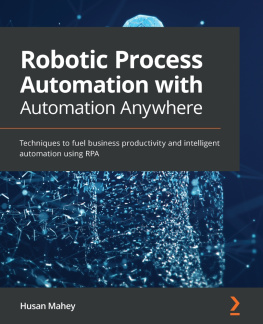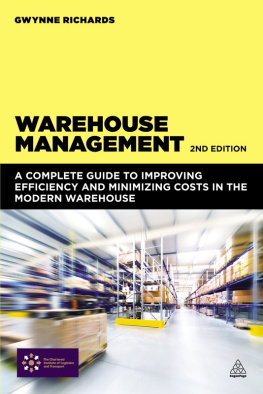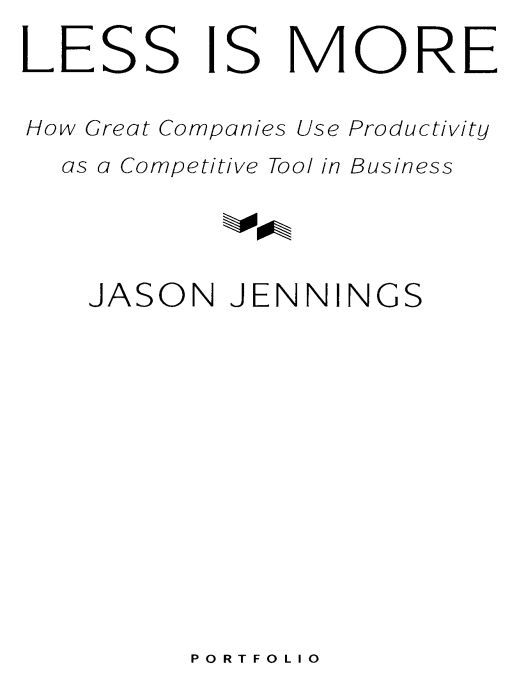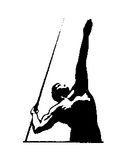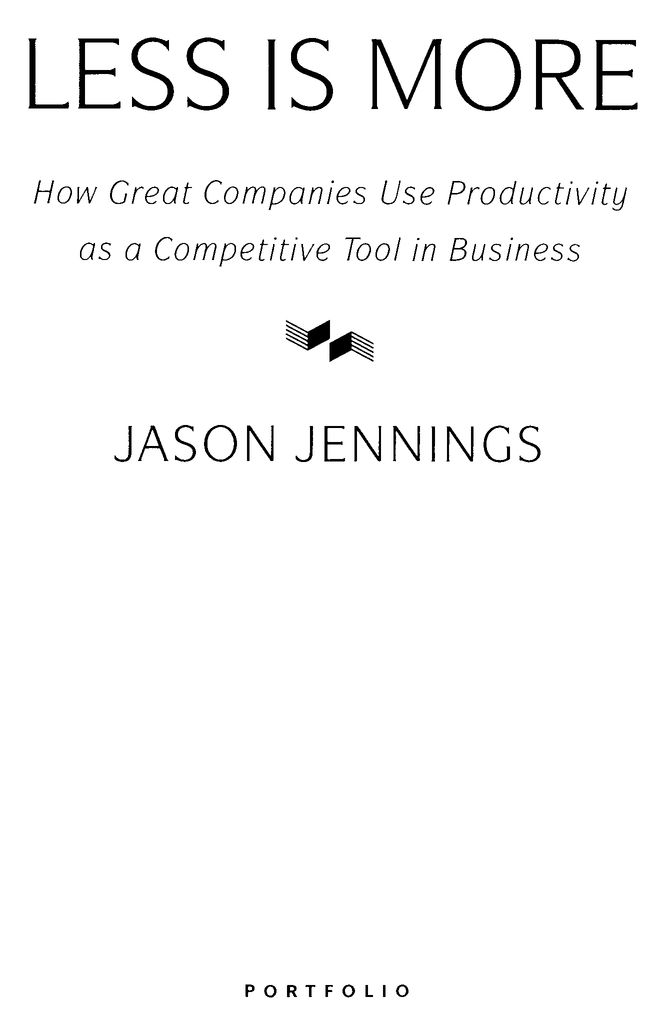Table of Contents
ALSO BY JASON JENNINGS
Its Not the Big That Eat the Small... Its the Fast That Eat the Slow
(with Laurence Haughton)
This book is dedicated to the businessmen and -women whose remarkable stories and achievements are revealed in its pages and to the people who allowed me the privilege of leading them on a fascinating and humbling yearlong journey of discovery.
INTRODUCTION
ProductivityWhats It All About?
Its about maintaining output while decreasing input. Or, better still, increasing output while decreasing input. Bottom line: getting more done with the same or less!
Efficiency and productivity have always fascinated meas they must anyone in business. But each time I tried tackling a book on the subject, I was either bored to death by all the charts, tables, half-page-long, small-type footnotesbig yawnor cowed by the esoteric, highbrow academic nature of the subject and all the explanations of macroeconomics, percentage shares of this and that, proposed pro forma operational cost measuresnap timeand references to cross-company processing. All the math and jargon made my hair hurt.
Why wasnt there a book about how the most efficient and productive companies got that way, with lessons that anyone or any company could follow?
Once I made the decision to fill that gap, the mission became obvious: identify some of the most productive companies in the world, dig deep inside, learn what they do differently from and better than their less productive rivals and then describe the lessons learned, in a way that other businesspeople could easily understand and implement.
The Search Begins
I began by assembling a team of enthusiastic researchers (including recent graduates of Princeton, Stanford and Berkeley) and setting them and me the task of examining thousands of companies around the world with no preconceived criteria in mind. The team members would simply keep open eyes and minds as we searched tens of thousands of databases, public records, financial reports, archived stories and previously published articles. We would identify those companies where even a hint of efficiency, thrift or productivity was noted.
Over a matter of months we developed a prospective list of eighty companies with performances that were far better than those of others. We made our selections after examining, considering, discussing and discarding thousands as being same old, same old.
Then the researchers spent weeks studying a group of the companies assigned to them individually, eventually presenting their best arguments to the entire team for each business they thought should be considered for further research and inclusion in the book. The team members knew that questioning would be incisive and their answers had to be precise. We were determined to be tough on each other. The intensity built and the researchers treated the project as seriously as an adventure in survivalintellectual survival, but survival nonetheless.
Throughout this process, the criteria for being included slowly developed and were refined as the vetting process continued. Did a companys sales per employee exceed the average for the industry category? If not, the group argued, it would be hard to present a case for productivity. Did the firms return on invested capital exceed or lead the field for its respective business category or group? What about profits? Unless a firms profit per employee was superior to its competitors, itd be tough building a case for world-class productivity. Had they done somethinganythingthat made them more productive than their peers? If they were not deemed outstanding, they were dumped.
Soon another criterionan offbeat onebegan to surface.
Ugh, what a boring company, said one of the researchers. Who in the heck would want to read about that outfit?
I began to wonder if sex appeal should be a selection criterion. If a company didnt have some kind of sparkle, the reader would be much less likely to respond to the story, no matter how valid the ideas. The research, interviewing and writing might grow into a tedious chore instead of an adventure, and Id be hard put to convince the reader to care. So if this book were to become a page-turner, style and attractiveness of the companies would have to count in the selection process.
And since we wouldnt be naming and defending the selected companies as the onlv productive companies in the world, we would be free to choose the ones that made the most exciting reading. Our list would include about ten of the most productive businesses on the planetones we fervently believed possessed lessons that could be used by other people in business.
So after all the musing and sifting, what were the criteria we finally settled on as the standards for judging productivity? What are the measures that show whether a company and its employees are outperforming the rest of the pack in the areas that truly matter?
What Makes a Productive Companythe Criteria
Heres our list of criteria for selecting the companies included in the book:
Revenue Per EmployeeThis measurearrived at by dividing total sales by the number of employeesspeaks volumes about a companys ability to efficiently market and sell its goods. (One company on our initial list, the hot Spanish fashion retailer Zara, gets a lot of great press, but generates only $100,000 in annual sales per employee, while the average fashion retailer generates $302,000. It simply didnt measure up.)
We also became aware of a ploy some companies use to inflate their sales per employee numbers. They fire employees and rehire them or others as a contracted workforce. It looks good on paper but it didnt get past us. We counted the workforce numbers of all the companies we eventually profiled to make certain they were accurate and we tallied part-time employees and proportionately counted them as full-time equivalents.
Return on Equity and Return on AssetsThe percentage return on a companys net worth for a given period tells shareholders how effectively capital is being employed. For example, if a companys net worth (assets less liabilities) is $5 million and they earn $1 million in a year, their annual return on equity is 20 percent.
During our research, we analyzed many companies that earned substantial profits and provided competitive returns on their stockholders equity. But some of the returns on equity we unearthed were mammoth by comparison to industry or business averages, indicating that these companies are far superior to their rivals in either their efficiencies or their productivity.
Similarly we reviewed a companys return on assets and only the top performers made our final list.
Operating Income Per EmployeeWhen comparing companies, net profit numbers can be misleading: theyre affected by differing national tax rates and often include a myriad of one-time charges or credits that may not be a reflection of actual income from operations. So we decided instead to use income from operations divided by the number of full-time, or full-time equivalent, employees, which seems a much better indication of a companys productivity.


